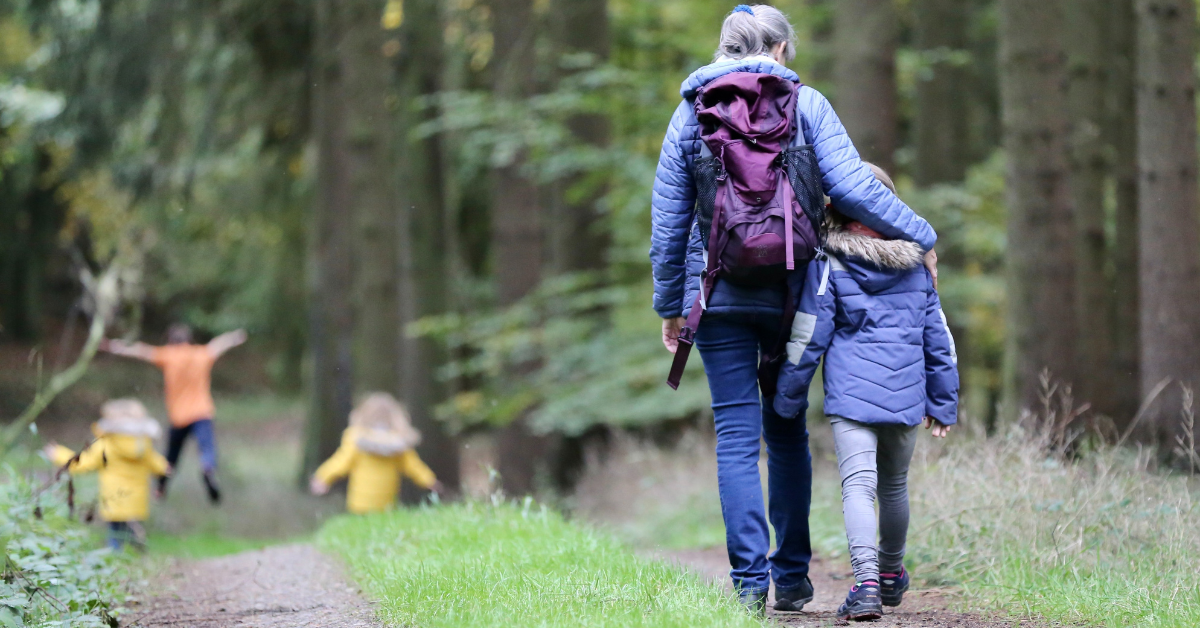What is the Multi-Generational Family?
What is the Multi-Generational Family? When it comes to the term “multi-generational family”, there are different usages and understandings of it. At...
4 min read
Bill High : Updated on October 8, 2024

Discover the importance of building a legacy home and how it can benefit multi-generation families. Learn how to establish your family's roots for generations to come while also meeting the needs of today's culture.
In today's fast-paced and individualistic culture, the idea of multi-generation families living together under one roof may seem unconventional. However, there is a growing interest in establishing a sense of continuity and connection between generations. This is where the concept of a legacy home comes into play.
A legacy home is more than just a physical structure. It is a space that holds the memories, traditions, and stories of multiple generations. It is a place where family members can come together, support one another, and create lasting bonds. By building a legacy home, you are not only creating a comfortable living space for your family today, but you are also laying the foundation for future generations to come.
Understanding the concept of a legacy home involves recognizing the importance of intergenerational relationships and the value of shared experiences. It means prioritizing family connections over individualism and embracing the idea of a collective identity.
When planning for a legacy home, it is essential to involve all family members in the decision-making process. This ensures that everyone's needs and preferences are taken into account. It is also important to consider the practical aspects of living together, such as privacy, personal space, and common areas. With careful planning and thoughtful design, you can create a space that accommodates the unique requirements of multi-generation families while fostering a sense of togetherness and belonging.
Creating a space that accommodates multi-generation families requires careful consideration of the different needs and preferences of each family member. It is important to design flexible and adaptable spaces that can evolve as the family grows and changes over time.
One of the key aspects to consider is the layout of the home. Open floor plans with interconnected living spaces allow for easy communication and interaction between family members. This promotes a sense of togetherness while still providing individual privacy when needed.
In addition to the layout, it is important to incorporate features that enhance accessibility and convenience for all generations. This may include installing ramps or elevators for elderly family members, creating designated play areas for children, and designing bedrooms and bathrooms that can be easily modified to accommodate different mobility needs.
Another important consideration is the allocation of personal space. Each family member should have their own private area where they can retreat and relax. This could be a separate bedroom, a home office, or a cozy reading nook. By providing designated spaces for personal activities, you can ensure that everyone feels valued and respected.
Creating a space that accommodates multi-generation families is a balancing act between individual needs and collective well-being. It requires thoughtful design, open communication, and a willingness to adapt to the changing dynamics of the family.
When building a legacy home, it is important to think long-term and design for longevity and adaptability. This means choosing durable materials and construction techniques that can withstand the test of time.
Investing in high-quality materials not only ensures the structural integrity of the home but also reduces the need for frequent repairs and renovations. This is especially important when considering the long-term costs of maintaining a multi-generation home.
In addition to durability, adaptability is key. Designing spaces that can easily be modified or repurposed allows for future changes and adjustments as the needs of the family evolve. This may involve incorporating movable walls or partitions, flexible furniture arrangements, and modular storage solutions.
By designing for longevity and adaptability, you are future-proofing your home and ensuring that it can continue to meet the needs of your family for generations to come.
As we strive to build a better future for the next generations, it is important to consider the environmental impact of our homes. By incorporating sustainable and eco-friendly features into your legacy home, you can contribute to a greener and more sustainable future.
There are many ways to make your home more sustainable. Installing energy-efficient appliances and lighting fixtures can reduce energy consumption and lower utility bills. Using renewable energy sources such as solar panels or geothermal systems can further reduce your carbon footprint.
In addition to energy efficiency, water conservation is another important consideration. Installing low-flow fixtures, collecting rainwater for irrigation, and landscaping with native plants can help minimize water usage and reduce the strain on local water resources.
Choosing eco-friendly building materials, such as recycled or reclaimed wood, bamboo flooring, or low-VOC paints, can also make a significant difference in the overall sustainability of your home.
By incorporating sustainable and eco-friendly features into your legacy home, you are not only reducing your environmental impact but also setting an example for future generations to follow.
A legacy home is not just a physical space; it is a repository of family traditions, stories, and memories. Preserving and passing down these intangible aspects of your family's history is just as important as creating a comfortable living environment.
One way to preserve family traditions is by incorporating them into the design and decor of your home. Displaying family heirlooms, photographs, and artwork can serve as visual reminders of your family's history and provide a sense of continuity and connection.
Creating dedicated spaces for family gatherings and celebrations can also help keep traditions alive. Whether it's a cozy dining area for holiday meals or a backyard patio for summer barbecues, having designated spaces for shared experiences and rituals can strengthen family bonds and create lasting memories.
In addition to physical spaces, storytelling plays a crucial role in preserving family traditions. Encourage family members to share their stories and experiences, whether through oral storytelling, written memoirs, or digital media. By documenting and passing down these stories, you ensure that future generations have a deeper understanding of their roots and a stronger connection to their family's legacy.
Preserving family traditions and stories is an ongoing process that requires active participation and engagement from all family members. By making it a priority in your legacy home, you are ensuring that your family's history is cherished and celebrated for generations to come.
.png)
What is the Multi-Generational Family? When it comes to the term “multi-generational family”, there are different usages and understandings of it. At...
.png)
When you hear the phrase “multi-generational family,” it’s easy to think only of children and grandchildren. But Scripture defines it differently.

What Happened to Multi-Generational Families?